Vijaya Yajnanarayana
Indoor Sensing with Measurements
Sep 01, 2024



Abstract:The cellular wireless networks are evolving towards acquiring newer capabilities, such as sensing, which will support novel use cases and applications. Many of these require indoor sensing capabilities, which can be realized by exploiting the perturbation in the indoor channel. In this work, we conduct an indoor channel measurement campaign to study these perturbations and develop AI-based algorithms for estimating sensing parameters. We develop several AI methods based on CNN and tree-based ensemble architectures for sensing. We show that the presence of a passive target like a person can be detected from the channel perturbation of a single link with more than 90 % accuracy with a simple CNN based AI algorithm. However, sensing the position of a passive target is far more challenging requiring more complex AI algorithms and deployments. We show that the position of the human in the indoor room can be estimated within the average position error of 0.7 m with a deployment having three links and employing complex AI architecture for position estimation. We also compare the results with the baseline algorithm to demonstrate the utility of the proposed method.
Bi-Static Sensing in OFDM Wireless Systems for Indoor Scenarios
Mar 07, 2024Abstract:The sixth generation (6G) systems will likely employ orthogonal frequency division multiplexing (OFDM) waveform for performing the joint task of sensing and communication. In this paper, we design an OFDM system for integrated sensing and communication (ISAC) and propose a novel approach for passive target detection in an indoor deployment using a data driven AI approach. The delay-Doppler profile (DDP) and power delay profile (PDP) is used to train the proposed AI-based detector. We analyze the detection performance of the proposed methods under line of sight (LOS) and non-line of sight (NLOS) conditions for various training strategies. We show that the proposed method provides 10 dB performance improvement over the baseline for 80% target detection under LOS conditions and the performance drops by 10-20 dB for NLOS depending on the usecase scenarios.
6G Positioning and Sensing Through the Lens of Sustainability, Inclusiveness, and Trustworthiness
Sep 24, 2023Abstract:6G promises a paradigm shift in which positioning and sensing are inherently integrated, enhancing not only the communication performance but also enabling location- and context-aware services. Historically, positioning and sensing have been viewed through the lens of cost and performance trade-offs, implying an escalated demand for resources, such as radio, physical, and computational resources, for improved performance. However, 6G goes beyond this traditional perspective to encompass a set of broader values, namely sustainability, inclusiveness, and trustworthiness. This paper aims to: (i) shed light on these important value indicators and their relationship with the conventional key performance indicators, and (ii) unveil the dual nature of 6G in relation to these key value indicators (i.e., ensuring operation according to the values and enabling services that affect the values).
Positioning and Sensing in 6G: Gaps, Challenges, and Opportunities
Nov 02, 2022



Abstract:Among the key differentiators of 6G compared to 5G will be the increased emphasis on radio based positioning and sensing. These will be utilized not only for conventional location-aware services and for enhancing communication performance, but also to support new use case families with extreme performance requirements. This paper presents a unified vision from stakeholders across the value chain in terms of both opportunities and challenges for 6G positioning and sensing, as well as use cases, performance requirements, and gap analysis. Combined, this motivates the technical advances in 6G and guides system design.
Spatial Signal Design for Positioning via End-to-End Learning
Sep 26, 2022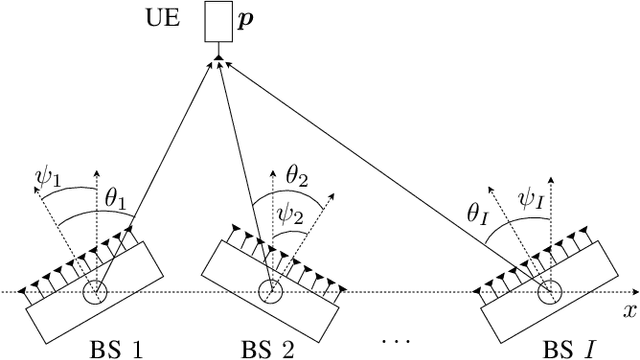
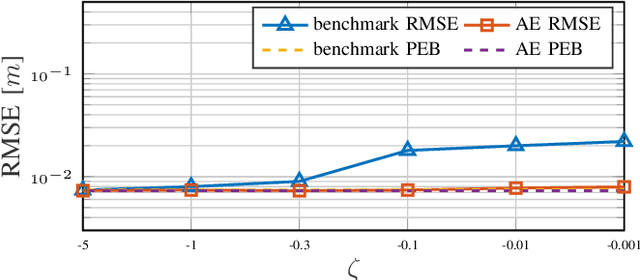

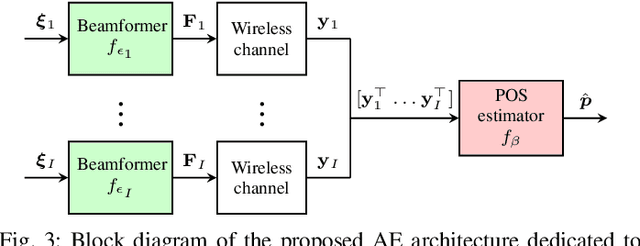
Abstract:This letter considers the problem of end-to-end learning for joint optimization of transmitter precoding and receiver processing for mmWave downlink positioning. Considering a multiple-input single-output (MISO) scenario, we propose a novel autoencoder (AE) architecture to estimate user-equipment(UE) position with multiple base-stations (BSs) and demonstrate that end-to-end learning can match model-based design, both for angle of departure (AoD) and position estimation, under ideal conditions without model deficits and outperform it in the presence of hardware impairments.
End-to-End Learning for Integrated Sensing and Communication
Nov 03, 2021
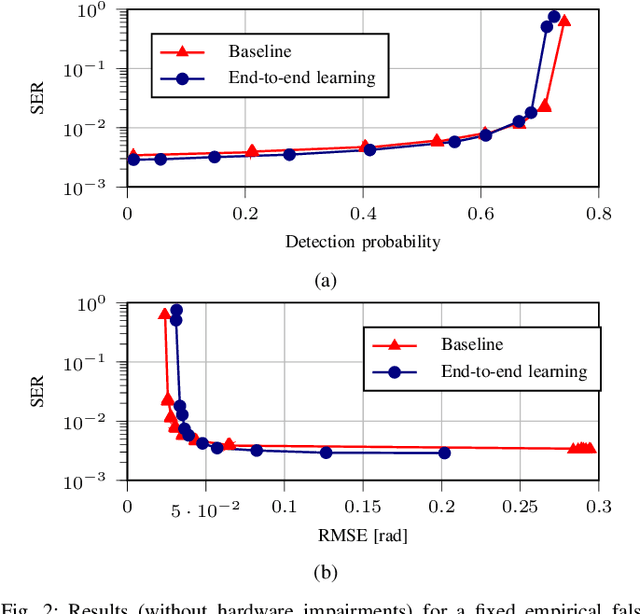
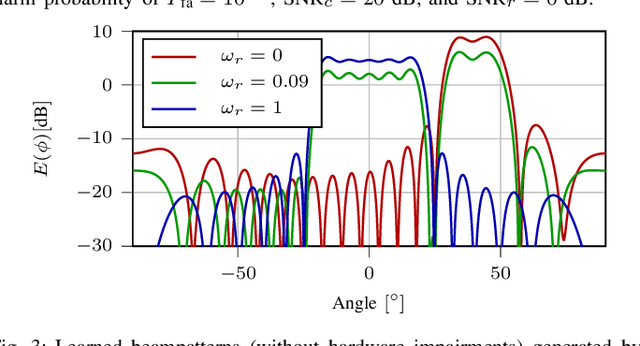
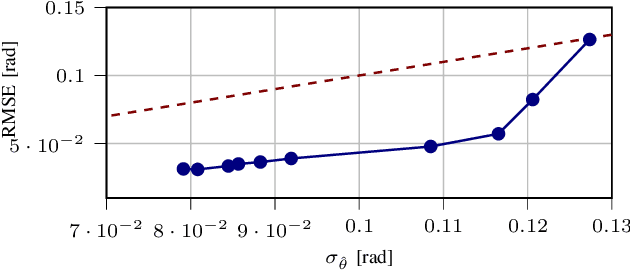
Abstract:Integrated sensing and communication (ISAC) aims to unify radar and communication systems through a combination of joint hardware, joint waveforms, joint signal design, and joint signal processing. At high carrier frequencies, where ISAC is expected to play a major role, joint designs are challenging due to several hardware limitations. Model-based approaches, while powerful and flexible, are inherently limited by how well the models represent reality. Under model deficit, data-driven methods can provide robust ISAC performance. We present a novel approach for data-driven ISAC using an auto-encoder (AE) structure. The approach includes the proposal of the AE architecture, a novel ISAC loss function, and the training procedure. Numerical results demonstrate the power of the proposed AE, in particular under hardware impairments.
Integration of Communication and Sensing in 6G: a Joint Industrial and Academic Perspective
Jun 24, 2021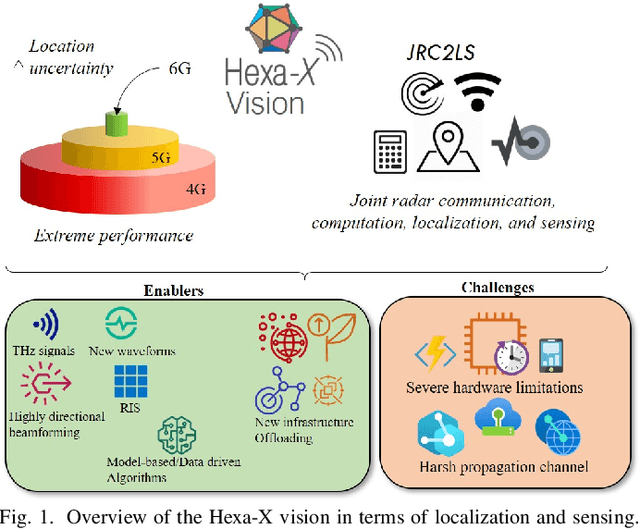
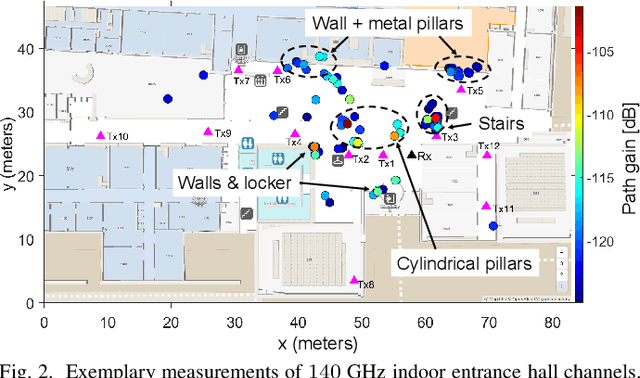

Abstract:6G will likely be the first generation of mobile communication that will feature tight integration of localization and sensing with communication functionalities. Among several worldwide initiatives, the Hexa-X flagship project stands out as it brings together 25 key players from adjacent industries and academia, and has among its explicit goals to research fundamentally new radio access technologies and high-resolution localization and sensing. Such features will not only enable novel use cases requiring extreme localization performance, but also provide a means to support and improve communication functionalities. This paper provides an overview of the Hexa-X vision alongside the envisioned use cases. To close the required performance gap of these use cases with respect to 5G, several technical enablers will be discussed, together with the associated research challenges for the coming years.
 Add to Chrome
Add to Chrome Add to Firefox
Add to Firefox Add to Edge
Add to Edge